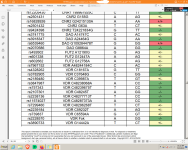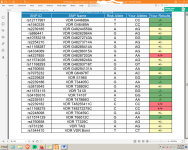Peyt
Senior Member
- Messages
- 678
- Location
- Southern California
Hello,
I have rs2060793(A;G) and I am usually low on Vitamin D especially in the winter time. Unfortunately, I am not able to tolerate Vitamin D supplements because it gives me really bad headaches. (I have tried at least 5 brands/ both capsule and tincture, all of which give me violent headaches).... So what I have noticed is every year, about 1 month into summer time, all the pain in my body reduces and goes away and again in November it comes back ... This has been happening all my life..
My question is: Is there any supplements that you know of that could benefit this SNP besides taking straight Vitamin D? I must add I have never tested low on Iron and my Iron has always been normal at least on the blood level.
Thank you so much in advance
I have rs2060793(A;G) and I am usually low on Vitamin D especially in the winter time. Unfortunately, I am not able to tolerate Vitamin D supplements because it gives me really bad headaches. (I have tried at least 5 brands/ both capsule and tincture, all of which give me violent headaches).... So what I have noticed is every year, about 1 month into summer time, all the pain in my body reduces and goes away and again in November it comes back ... This has been happening all my life..
My question is: Is there any supplements that you know of that could benefit this SNP besides taking straight Vitamin D? I must add I have never tested low on Iron and my Iron has always been normal at least on the blood level.
Thank you so much in advance


